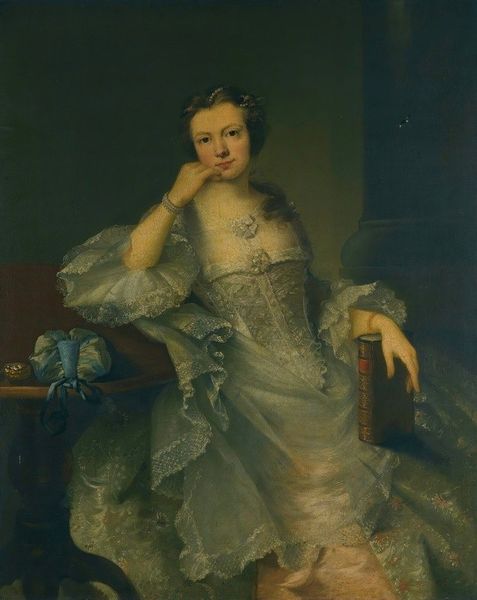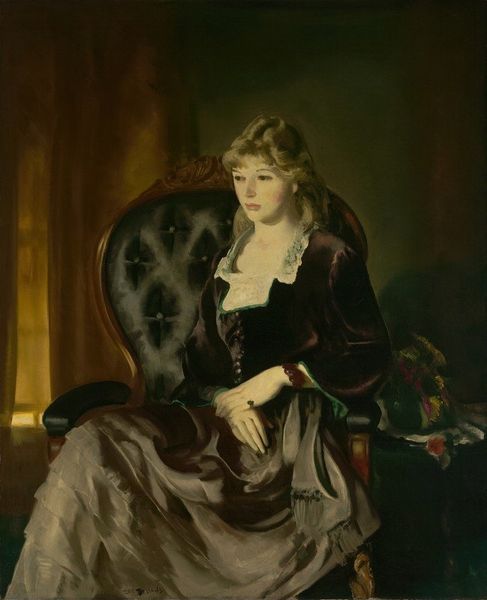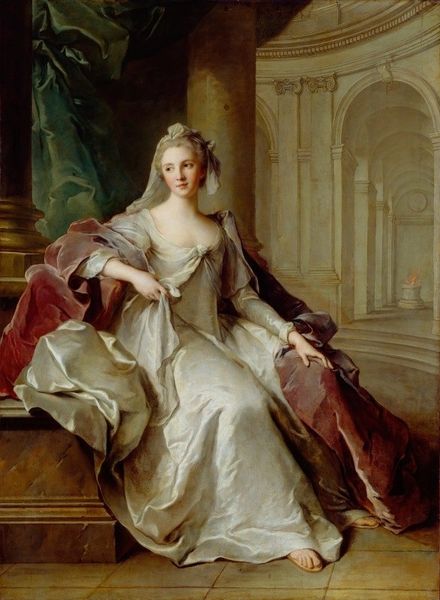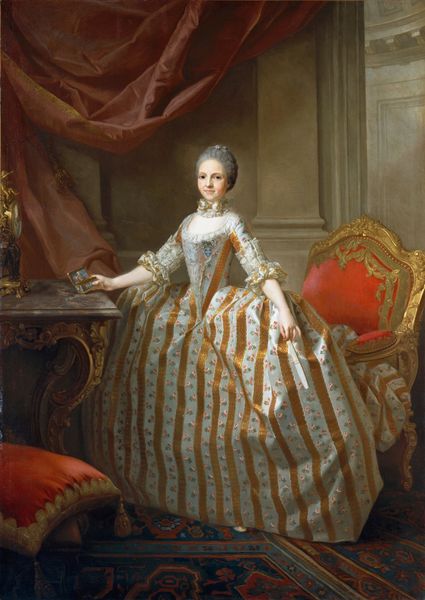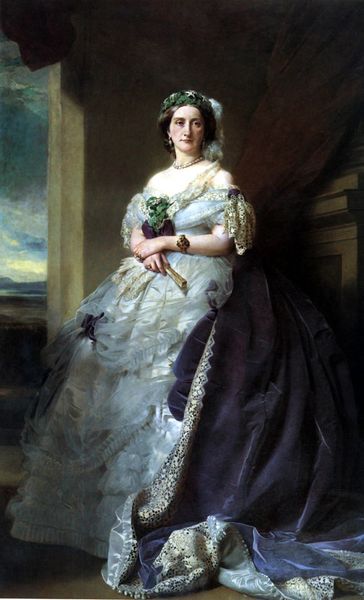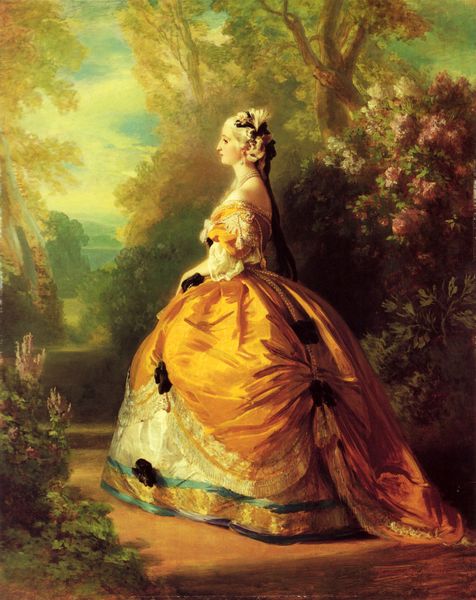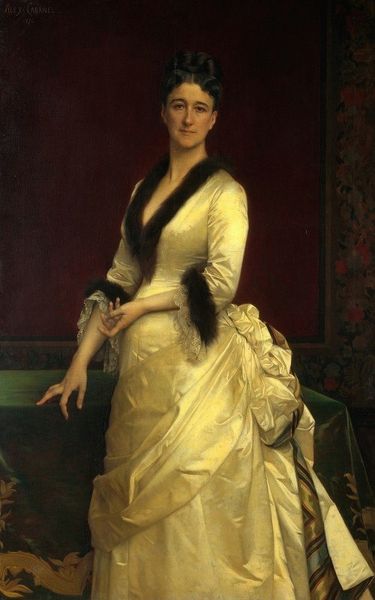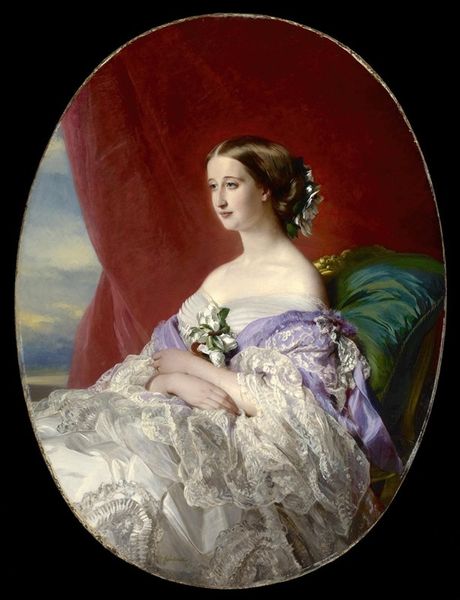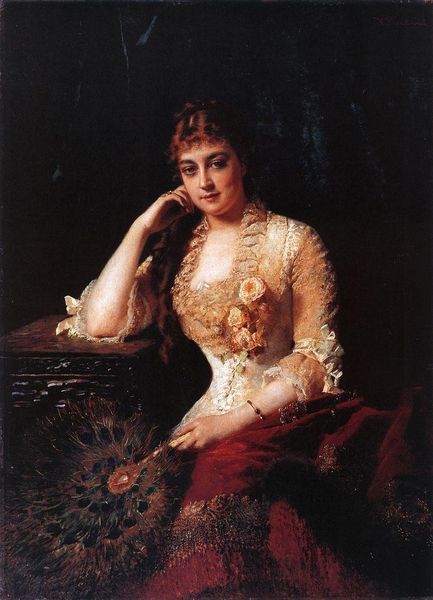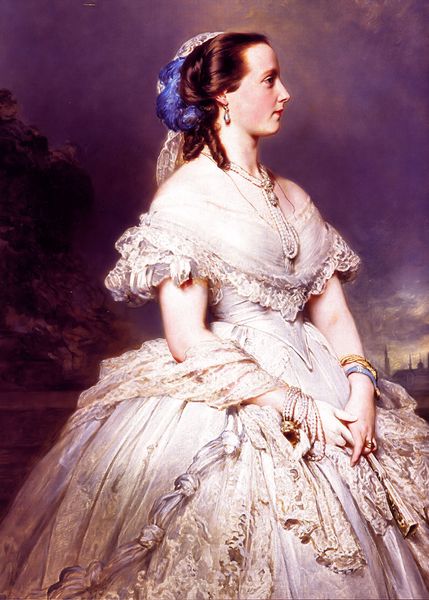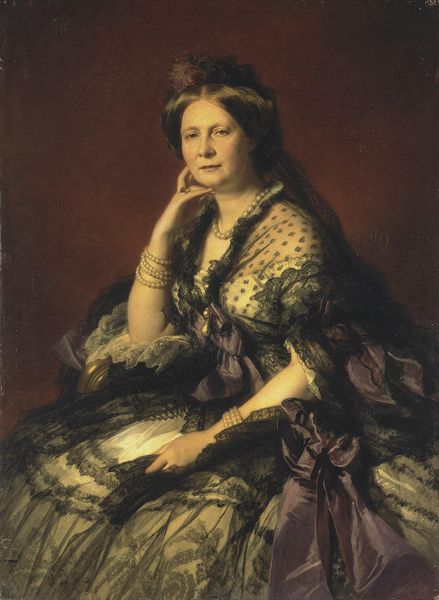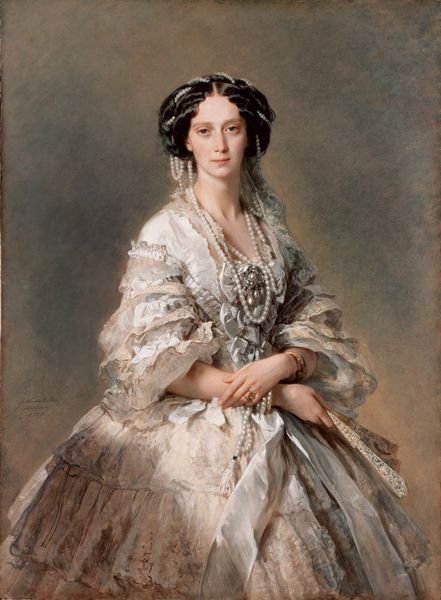
Copyright: Public domain
Curator: This is Franz Xaver Winterhalter's portrait of Eugénie, Empress of the French, painted in 1862 using oil on canvas. Editor: Wow, she’s positively drowning in that dress. It's almost gothic with the shadows enveloping her, don't you think? And that wistful gaze...she appears so far away, perhaps even resigned? Curator: Interesting, isn't it? Winterhalter was known for capturing the glamour and elegance of European royalty. But here, you are right, there’s an undercurrent, a melancholy that feels at odds with the opulence surrounding her. It might be a window into the constraints placed upon her, trapped within her role. Editor: Exactly! And if we look beyond the surface, beyond the diamonds and the throne, what's her role anyway? To bear heirs, embody empire? Where is Eugénie in all of this? Does this picture ask if the aesthetic harmony in painting erases or perpetuates an unspoken tension of identity and political expectations? Curator: Perhaps Winterhalter subtly hints at that tension. Think of the deliberate positioning of her hand supporting her face. It's an elegant gesture, of course, but could it also suggest weariness or even contemplation, a break from the facade? Editor: I wonder, too, about the politics of the portrait itself. These images weren't just decorative; they were strategic tools for projecting power and maintaining dynastic stability. Every detail, from the fabric of her gown to the angle of her gaze, becomes part of a constructed narrative. And the dress! It’s like the painter had a romance with excess—yet who truly benefits? Is Winterhalter glorifying monarchy or questioning its artificiality? Curator: It’s like he presents her as a performance. I wonder if Eugénie herself had any say in how she was represented? It’s a tantalizing dance between control and self-expression that whispers to us over the years. Editor: It does indeed. It makes me realize the importance of understanding the context in which these portraits are created. That way, we might appreciate the artistry while remaining critical of the narratives being presented to us. Curator: Yes, the ability of a piece to question, as well as reflect, is what really touches me about art in the end. Editor: Beautifully said, Curator. It gives us so much to think about, as we move forward.
Comments
No comments
Be the first to comment and join the conversation on the ultimate creative platform.
